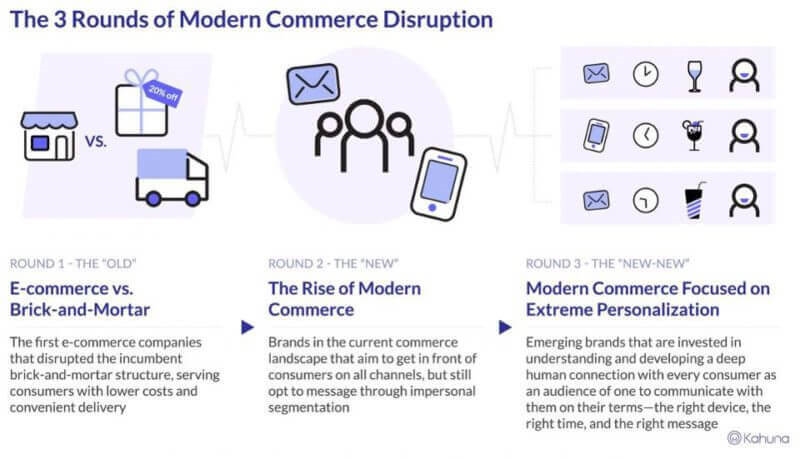Today’s retail environment demands a shift in mindset and an unprecedented level of consumer understanding. Contributor Brian Solis lays out the path he believes retailers must take to be successful.

Why did Amazon buy Whole Foods?
Many speculate that Amazon did so to thwart the mounting offensive from traditional retailers. As the news of the Amazon/Whole Foods deal monopolized press headlines, Walmart announced the acquisition of Bonobos menswear. In 2016, Walmart also bought Jet.com, an online bulk retailer, for $3.3 billion, the largest deal ever for an e-commerce company.
The acquisition wasn’t just to give Walmart access to new channels and customers. They also brought in new thinking and expertise to shake up the executive ranks. Bonobos, in particular, understands up-market consumers and how to balance online and physical retail strategies to reach them. This is a key area in which Walmart has struggled in the past.
The future of commerce is hybrid, blurring the lines between online and offline engagement.
Amazon has made it clear that it was expanding beyond e-commerce to reimagine brick-and-mortar for a modern economy. Beyond its rising bookstore footprint and experimental grocery pilots, Amazon’s purchase of Whole Foods will give the company strategic access to neighborhoods and customer engagement in ways it couldn’t online. Each store will likely further expand into on-demand delivery, introduce new Prime memberships and also provide space for customers to learn about and purchase Amazon’s growing array of hardware and devices.
Meanwhile, Walmart is clearly communicating to the market that it can compete in an era of modern commerce. And the Walmart/Amazon rivalry should inspire struggling traditional retailers everywhere that new mindsets, capabilities and focus on evolving customers can get them back on course.
With traditional retailers fighting to survive and thrive in a hybrid world, e-commerce companies becoming commerce brands, and new e-commerce players attempting to disrupt their predecessors, the stage is set for Round 3 of modern commerce.
Ding: Round 3 of modern commerce is underway

Two clear stages, or rounds, have marked the evolution of electronic commerce. In Round 1, we saw emerging e-commerce players taking on established brick-and-mortar brands. In Round 2, modern commerce brands engaged in e-commerce niches while meeting and shaping advancing customer expectations.
Now, we are approaching a new paradigm. In Round 3, we will see the reimagining of the role of physical space, along with a new model for online shopping that combines intelligent technologies, hyper-personalization and seamless cross-channel engagement. Additionally, we’ll see technology enable increased awareness of and sensitivity to the moments when consumers are receptive to marketers’ messages.
Round 3 is for anyone to win, but the stakes are changing. Low price and great service are no longer competitive differentiators. At the center of the next round of modern commerce is an evolving generation of customers who shop, behave and expect to engage differently. Winners in Round 3 will be those who can achieve personalization in the most meaningful way at key decision points.
A primer for competing in Round 3: The modern marketing blueprint
To win Round 3, the question companies should be asking is not “How do we take on Amazon?” The question is, “What do we need to do differently in the world of Amazon and evolving customer preferences, expectations and behaviors to be competitive?”
The answer starts with business leaders shifting their priorities to customer experience, engaging customers in the moments that matter and investing in 1:1 personalization at scale.
To truly operate as a consumer-centric company requires a new way of thinking about marketing. That begins with advancing the marketing mindset from automation to personalization.
Recently, I had the opportunity to work with marketing automation platform Kahuna to create a modern marketing blueprint (registration required). Its foundation is four core pillars designed to personalize customer engagement and experiences in real time: listen, learn, create and implement.
Listen:
- Evaluate tactics and strategies from the customer’s point of view.
- Replace classic demographic segmentation with behavioral segmentation methods based on what your consumer wants and what they do at the individual level.
- Collect data based on consumer interactions with the brand through a variety of channels that represent the journeys they take with the brand.
Learn:
- Study the customer as they evolve.
- Watch how the consumer interacts with the brand organically, draw conclusions about their preferences and use this information to shape messaging.
- Determine channel preferences and means of engagement that the consumer prefers in how they interact with the brand.
Create:
- Each customer journey is different. Modern marketers must engage each person in the way that works best for them.
- Craft an engagement strategy that focuses on the individual.
- Personalize messaging based on individual preferences for content, channel and timing.
- Develop an efficient, intuitive and adaptive click path between engagement and the desired outcome to maximize business results.
Implement:
- Use the right tools to personally engage consumers across channels and create a seamless consumer experience
- Implement an AI-powered marketing automation platform that combines content and context in a cross-channel program (email, app, browser, push notifications, web and mobile in-app messaging, SMS and social media).
- Review campaign performance data at a granular level to know how marketing efforts impact business objectives.
- Implement process and technology improvements to continuously listen and learn the consumer’s preferences and behaviors.
- Optimize content and path accordingly.
- Improve customer engagement in real time.
With the rise of AI and machine learning, modern marketers have access to a new class of marketing automation platforms that accelerate the implementation of this marketing blueprint.
AI-powered marketing platforms convert customer data and activities into actionable, personalized insights, which leads to more relevant and personalized cross-channel consumer engagement.
In addition to modern marketers getting smarter about customer experience and personalization, AI can interpret digital breadcrumbs, replacing manual guesswork with automated decision-making.
To win Round 3, modern marketers must invest in technology, resources and models to support one-to-one personalization in the moments that matter at scale.
The modern marketing blueprint is designed to develop relationship-building disciplines for more effective customer engagement and experiences. Those who focus only on technology without understanding how consumer behaviors, preferences and expectations are changing can never be truly customer-centric. And without customer-centricity, modern marketing can never be personalized and meaningful.
Customers have a say in who will win Round 3. You need them more than they need you.
Some opinions expressed in this article may be those of a guest author and not necessarily Marketing Land. Staff authors are listed here.
Marketing Land – Internet Marketing News, Strategies & Tips
(34)
